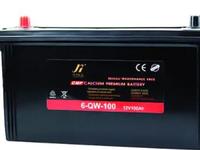Protection Against Lead-Acid Batteries
-
Lead-acid battery maintenance Overcharging a lead-acid battery can be just as harmful as undercharging. Corrosion of the positive plate of the battery may occur if a worker leaves the battery on a continuous charge for an extended period of time.
Lead-acid batteries can also get very hot when charging. Therefore, if a worker overcharges the battery, the battery may damage the interior due to prolonged exposure to excessively high temperatures. Some of the following actions can also hurt the performance of the Sealed 12v Battery.
(1) Excessive watering
Overwatering can also cause serious damage to lead-acid batteries. When the battery is overwatered, the electrolyte gets diluted. This will reduce the performance of the battery. There is also the risk of spillage from overwatering, a dangerous mixture of toxic sulfuric acid.
(2) Forgetting to check the vents: The vents allow hydrogen to escape. If the gas fails to release on its own, pressure build-up can cause an instant explosion with devastating consequences for employees and facilities.
(3) Skip the cooling period: The life of lead-acid batteries is shortened when exposed to extreme temperatures, especially high temperatures. After charging a lead-acid battery, staff must ensure that it undergoes an 8-hour cooling period, as charging generates a lot of heat. The cool-down period allows the battery to return to a safe temperature before being put back into service.
(4) Deep discharge of the battery: The life of the lead-acid battery will be affected when deep discharge occurs and the battery is in a "dead" state for a long time. Workers can only discharge lead-acid batteries to about 30% or they will damage the batteries.

